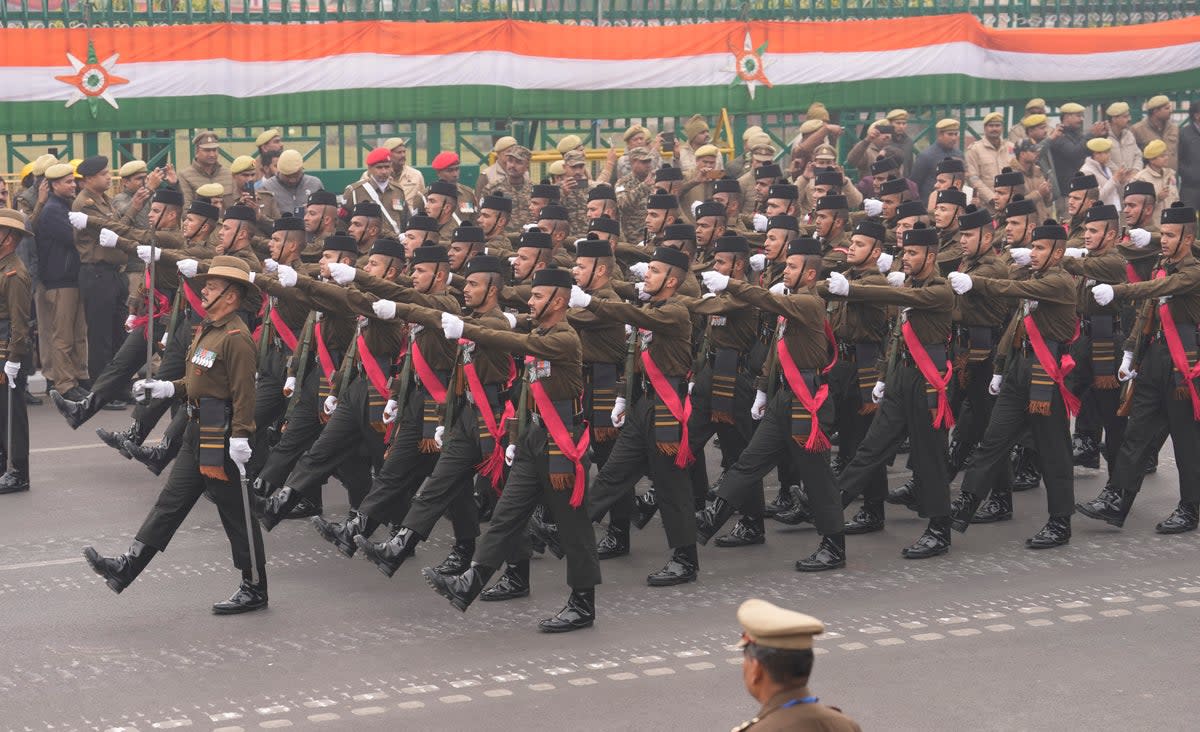Indian army officers told to get fit or face the consequences

The Indian Army, concerned over the “declining physical standards among officers” and the “rise of lifestyle diseases” has implemented a new policy to tackle the deteriorating physical fitness of soldiers.
According to the Indian Express, the new policy introduces stricter measures and additional tests to the existing physical fitness evaluation system.
One key aspect of the new physical fitness policy for the Indian army includes introducing new challenges beyond the regular quarterly tests — the Battle Physical Efficiency Test and Physical Proficiency Test.
Officers are now mandated to undertake a 10km speed march and a demanding 32km route march biannually. Besides this, a yearly 50-metre swimming proficiency test has been incorporated to further assess their physical capabilities.
In the current Battle Physical Efficiency Test, participants are required to successfully finish a 5km run, execute a 60-metre sprint, demonstrate proficiency in rope climbing both horizontally and vertically, and navigate a 9-foot ditch, all within a time limit that varies according to their age.
The Physical Proficiency Test comprises various exercises, including a 2.4 km run, a 5-metre shuttle run, push-ups, chin-ups, sit-ups, and a 100-metre sprint. A swimming test is included, but it is conducted only at locations where the necessary facilities are available.
According to the report, there is punishment for not meeting the fitness standards. Officers failing to meet physical standards, especially those categorised as overweight, will receive written counselling and a 30-day improvement period during which they are supposed to lose the extra pounds. During this period, requests for any leave will not be accepted.
Those failing to show any improvement may have to face actions under Indian military laws — Army Regulation 15 and Army Act 22.
According to the updated policy, a Brigadier rank officer will oversee quarterly tests, a role previously managed by a Commanding officer, and involves each personnel keeping an APAC [Army Physical Fitness Assessment] card.
India boasts one of the world’s most extensive armies and the armed forces are among the country’s largest employers. However, the government under prime minister Narendra Modi expressed concerns that a high number of soldiers continue to serve over long-term careers – leading to an increased average age within the armed forces and, in turn, a perceived diminishing overall combat readiness and effectiveness.
In 2022, India introduced a new recruitment plan for the Indian forces based on Western “tour of duty” systems, which was met with protests across the country.
Under the new “Agnipath” (path of fire) plan unveiled by Indian defence minister Rajnath Singh on 14 June 2022, applicants between the ages of 17.5 and 21 will be hired into the three services – navy, air force and army – and employed for four-year tours similar to systems in the US and UK. Out of all recruits, only 25 per cent will be retained at the end of these contracts, with the rest leaving employment – one of the most controversial features of the scheme.
Around 50,000 to 60,000 recruits will be taken annually over the next four years and the number is expected to rise to 90,000 to 120,000 thereafter, with Mr Singh saying the changes will make the army “younger and [more] battle-ready”.
The Independent has reached out to the Indian Army for comment.

